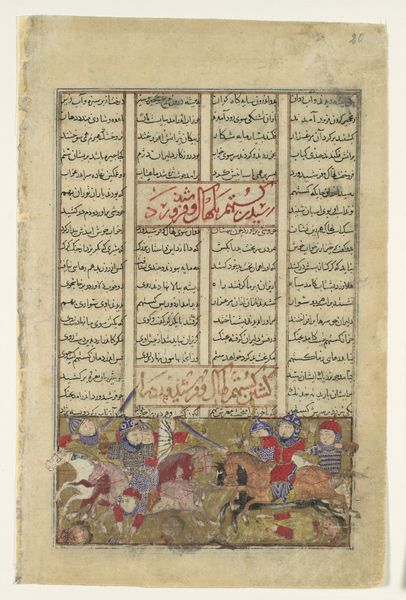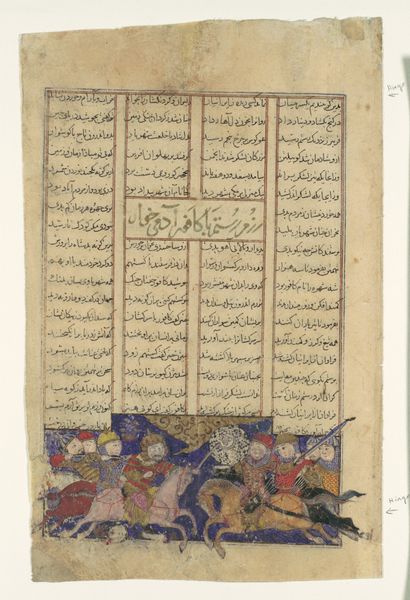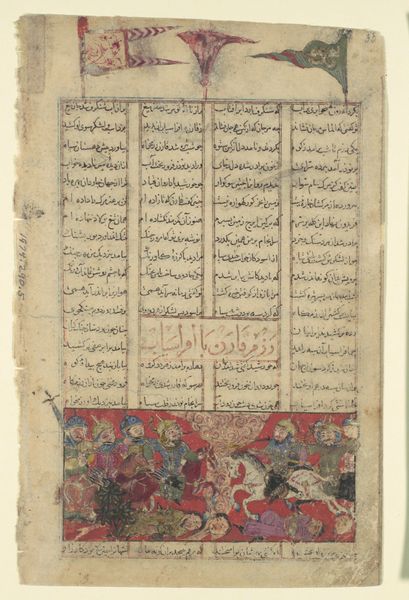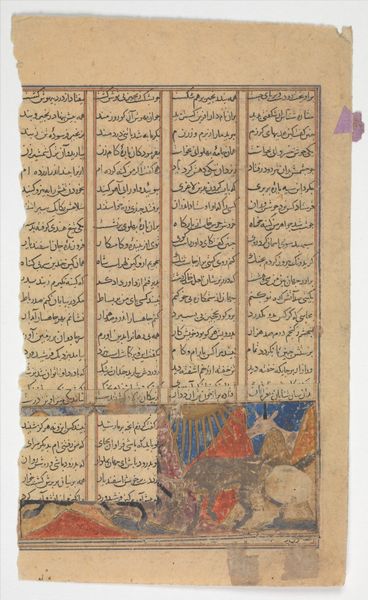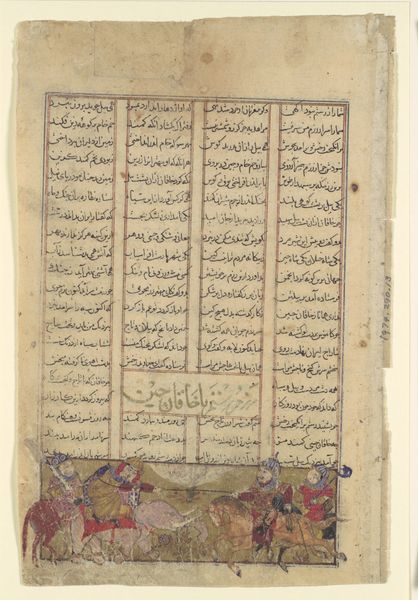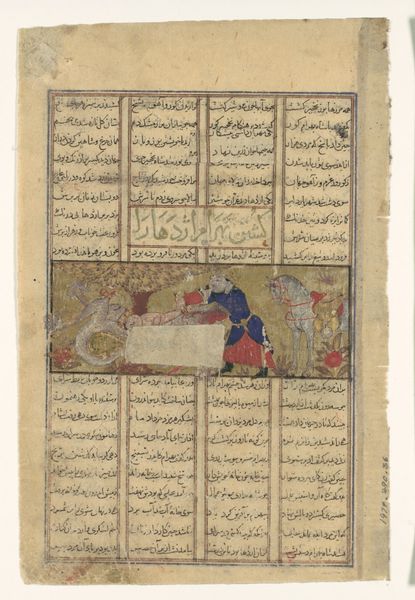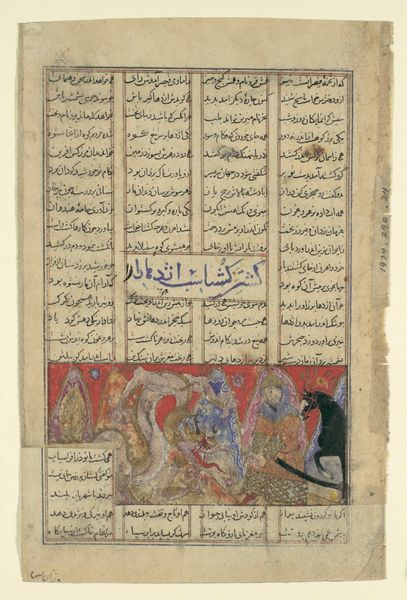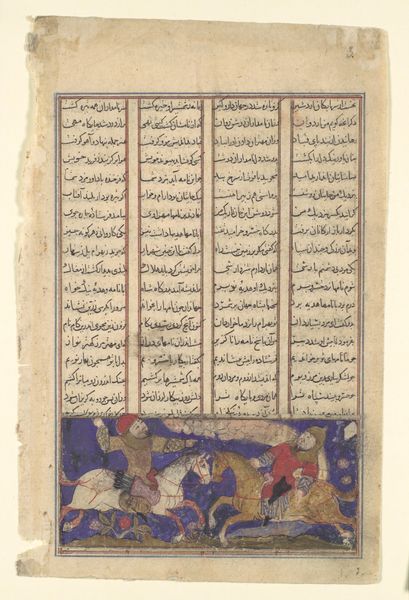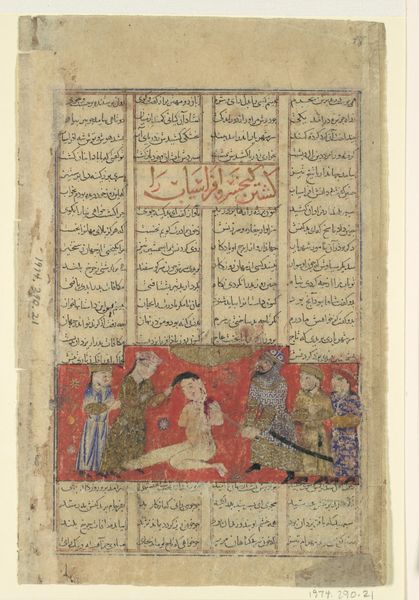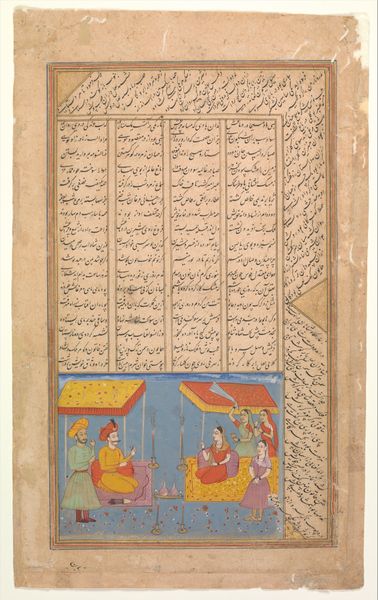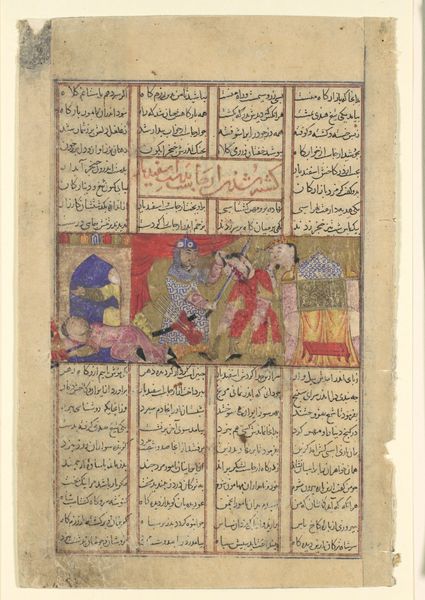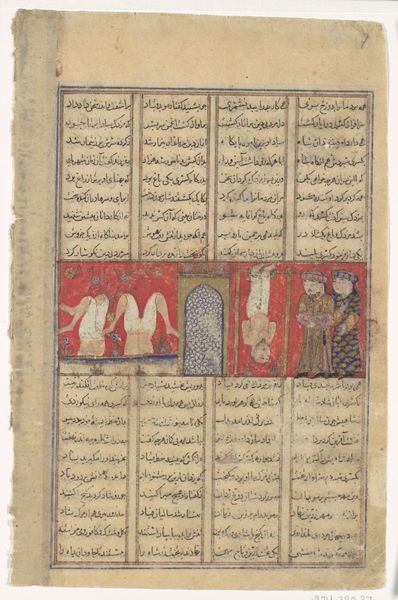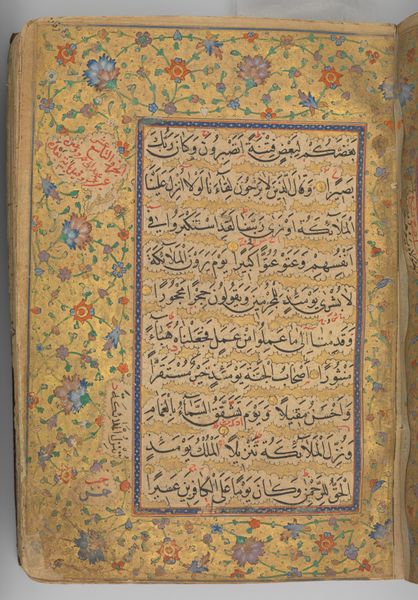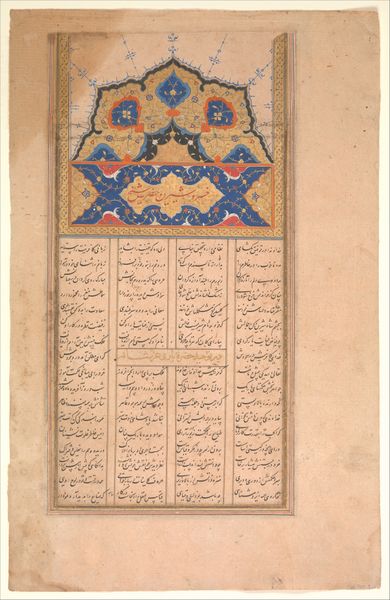
"The Combat of Tus and Human," Folio from a Shahnama (Book of Kings) 1305 - 1365
0:00
0:00
painting, paper, ink
#
medieval
#
narrative-art
#
painting
#
landscape
#
figuration
#
paper
#
ink
#
islamic-art
#
miniature
Dimensions: Page: H. 7 15/16 in. (20.2 cm) W. 5 3/16 in. (13.2 cm) Painting: H. 1 9/16 in. (3.9 cm) W. 4 1/4 in. (10.8 cm)
Copyright: Public Domain
Editor: Here we have "The Combat of Tus and Human," a painting from a Shahnama, dating roughly between 1305 and 1365. It's ink and opaque watercolor on paper, and currently held at the Metropolitan Museum of Art. It has this very stylized landscape, and then this dramatic clash of figures… it almost feels like a chaotic dance. What strikes you when you look at this work? Curator: From a formalist perspective, I am drawn to the arrangement of forms. The script dominates, compartmentalizing the image and controlling its reading. The lower register provides the chaotic tension to which you alluded, with the agitated figures rendered in vibrant hues. Ask yourself, what is the function of that tension in relation to the structured inscription above? Editor: The figures do seem very dynamic, all these overlapping horses and warriors in bright colors... but I am unsure about that tension. The text, although beautiful, is quite static. It does divide up the work quite significantly. How can they relate beyond a visual contrast? Curator: Consider the materiality itself. The deliberate application of pigment, line, and form are carefully constructed. The painting's visual elements and textual layout creates meaning as much as any narrative content. Semiotically speaking, the colors may act as signs; they could denote status or even allegiance in the battle. Do the color choices suggest any deeper purpose than simple aesthetic appeal? Editor: I hadn’t considered the colors that way! So, instead of just depicting a story, the arrangement and the materiality contribute to a larger structural understanding of power dynamics and meaning within the work? Curator: Precisely. We must always begin with the image itself. Only then can we deduce meaning. Editor: Thank you! I see it now: it's all interconnected, the placement, color, and writing itself, revealing a new way to decode the artwork. Curator: Indeed. The image transcends mere illustration; it becomes a self-contained system of signs.
Comments
No comments
Be the first to comment and join the conversation on the ultimate creative platform.
